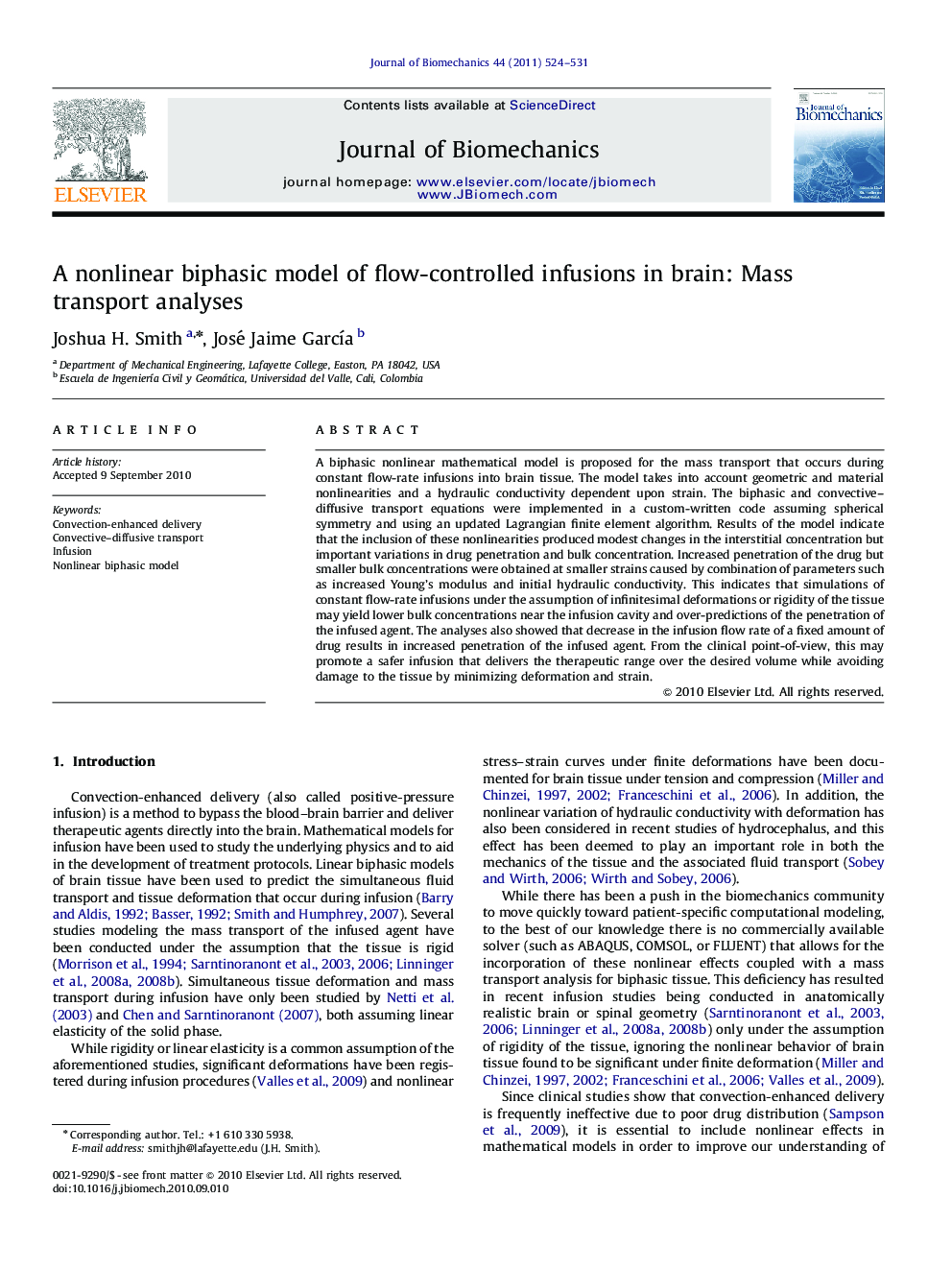| Article ID | Journal | Published Year | Pages | File Type |
|---|---|---|---|---|
| 873062 | Journal of Biomechanics | 2011 | 8 Pages |
A biphasic nonlinear mathematical model is proposed for the mass transport that occurs during constant flow-rate infusions into brain tissue. The model takes into account geometric and material nonlinearities and a hydraulic conductivity dependent upon strain. The biphasic and convective–diffusive transport equations were implemented in a custom-written code assuming spherical symmetry and using an updated Lagrangian finite element algorithm. Results of the model indicate that the inclusion of these nonlinearities produced modest changes in the interstitial concentration but important variations in drug penetration and bulk concentration. Increased penetration of the drug but smaller bulk concentrations were obtained at smaller strains caused by combination of parameters such as increased Young’s modulus and initial hydraulic conductivity. This indicates that simulations of constant flow-rate infusions under the assumption of infinitesimal deformations or rigidity of the tissue may yield lower bulk concentrations near the infusion cavity and over-predictions of the penetration of the infused agent. The analyses also showed that decrease in the infusion flow rate of a fixed amount of drug results in increased penetration of the infused agent. From the clinical point-of-view, this may promote a safer infusion that delivers the therapeutic range over the desired volume while avoiding damage to the tissue by minimizing deformation and strain.
